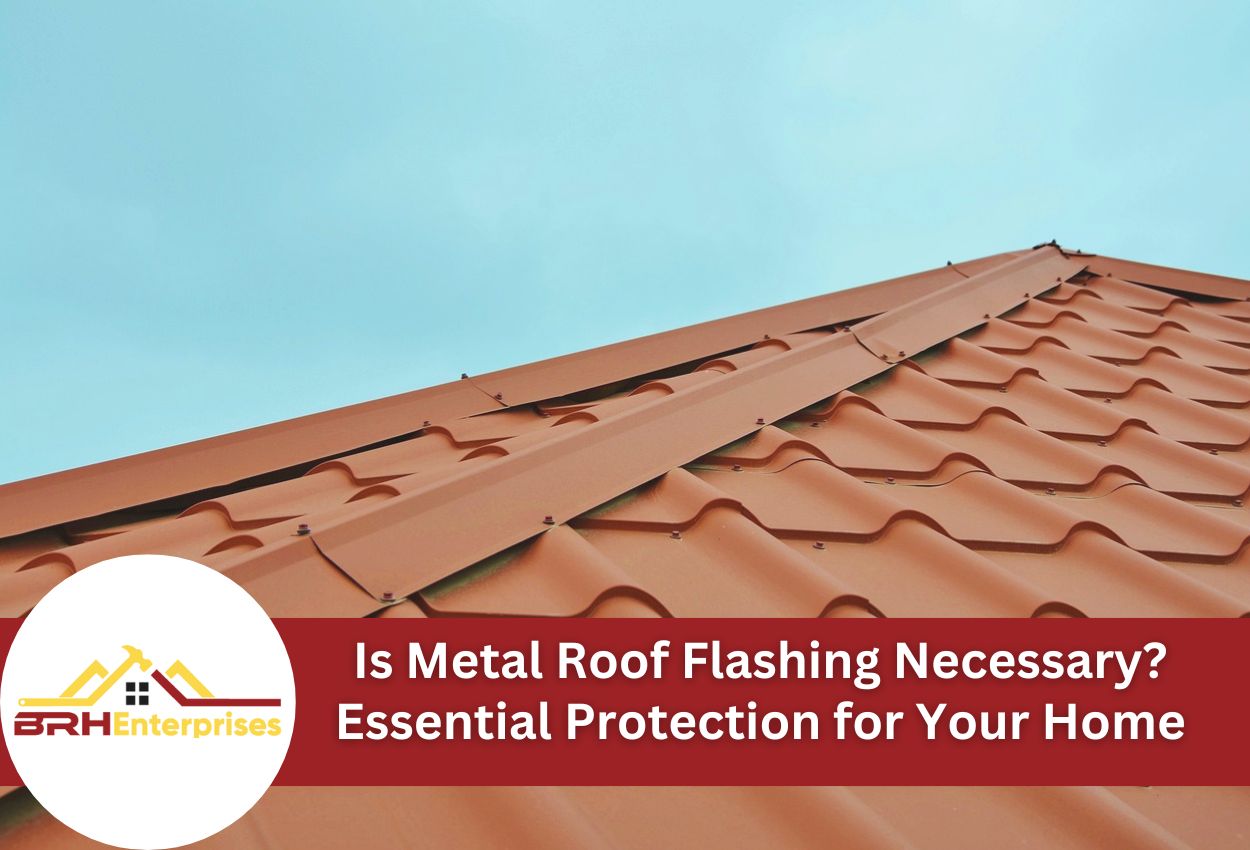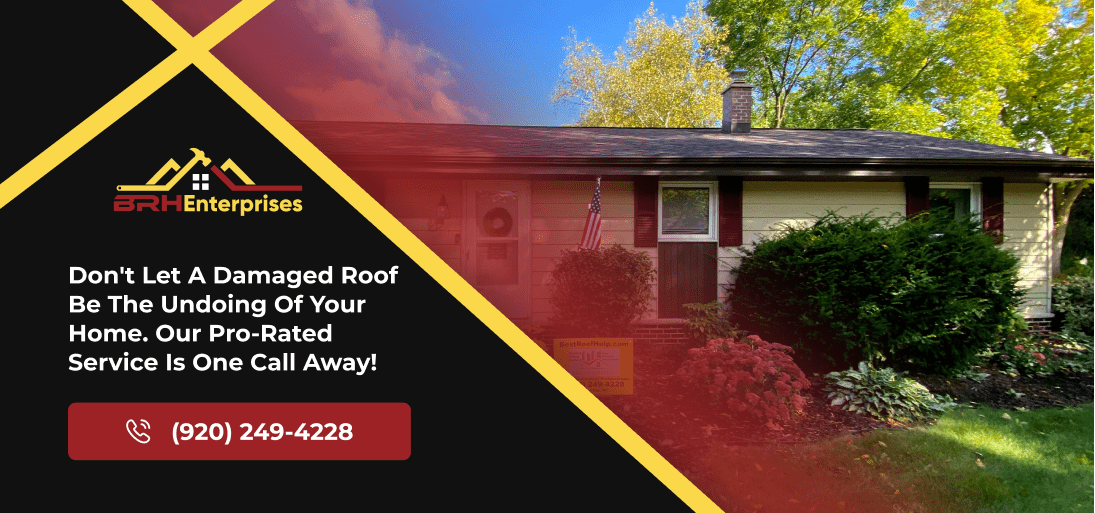Is Metal Roof Flashing Necessary? Essential Protection for Your Home
Estimated Reading Time : 6 Min.

When it comes to protecting your home from water damage, metal roof flashing acts as the primary defense against moisture infiltration at the most vulnerable parts of your roof: the joints, valleys, and transitions. Without flashing, even the most expensive roofing materials can fail prematurely, leading to otherwise unnecessary repairs and structural issues.
In Wisconsin’s challenging climate, where heavy snow, ice dams, and seasonal downpours are common, metal roof flashing isn’t just recommended — it’s necessary. This thin, weatherproof material creates a watertight seal at intersections where roofing materials meet walls, chimneys, vents, or other roof sections. These areas naturally collect water and are more susceptible to leaks if not properly protected.
While some homeowners question whether metal flashing is really essential, roofing professionals understand that skipping this component is not an option. Metal flashing outperforms alternatives like rubber in lifespan and durability, especially in Wisconsin’s freeze-thaw cycles. The modest investment in quality metal roof flashing prevents water damage, extends roof lifespan, and maintains structural integrity.
Understanding the importance of proper flashing installation can save homeowners thousands in potential repair costs while ensuring their roofing system performs as intended for decades to come.
Understanding the Vital Role of Flashing in Roof Protection
Flashing creates critical waterproof barriers at vulnerable points throughout your roofing system. In Wisconsin’s climate, where annual precipitation can exceed 30 inches and winter snow melt creates persistent moisture challenges, proper flashing installation around chimneys, skylights, vents, and valleys becomes even more essential. Metal flashing forms watertight seals that direct water away from these potential entry points, preventing it from seeping into your home.
When flashing is incorrectly installed or omitted entirely, the consequences can be severe and expensive. Without roof flashing, water finds its way into wall cavities, attic spaces, and eventually your living areas. This moisture intrusion typically leads to water stains on ceilings and walls, but the damage often goes beyond cosmetic issues. Hidden within your home’s structure, this trapped moisture creates ideal conditions for black mold growth, wood rot, and deterioration of structural components.
Metal flashing for roof water protection offers superior performance compared to other materials, particularly in Southern Wisconsin’s extreme temperature fluctuations. Quality metal flashing maintains its integrity through freeze-thaw cycles that would damage or degrade rubber alternatives. Specific roof valley flashing requirements must be met to ensure complete protection across these high-water collection areas. The importance of roof flashing installation cannot be overstated — it’s the difference between a roof that protects your home for decades and one that fails prematurely.
Critical Areas Where Metal Flashing Cannot Be Compromised
While some roofing components might have alternatives, certain areas of your roof absolutely need metal flashing to maintain structural integrity. Roof valleys (where two roof planes meet) are vulnerable to damage as they channel large volumes of water during rainfall. Without valley flashing, water can seep under shingles and into your home’s framework. Similarly, eaves (the roof edges that overhang the exterior walls) need metal flashing to protect the fascia and prevent water from seeping behind the gutters.
Roof penetrations are another vulnerability that needs flashing. Chimneys, vents, skylights, and pipes that penetrate your roof’s surface create natural weak points where water can easily infiltrate. Metal flashing creates watertight seals around these features that rubber alternatives simply cannot match in longevity or performance.
When correctly installed in these critical areas, metal flashing significantly extends your entire roofing system’s lifespan. This protection works by preventing water from reaching the roof deck and underlying structure, eliminating the primary cause of premature roof failure.
The investment in quality metal roof flashing at these critical junctions pays off by protecting your home’s structure from moisture damage and maintaining the integrity of your roofing system through decades of Wisconsin’s weather.
Metal Flashing Materials and Their Benefits
The right metal flashing material is key to long-term roof protection, especially in Southern Wisconsin’s challenging climate. Different metals offer different durability, corrosion resistance, and price points. Aluminum flashing is lightweight and naturally corrosion-resistant, making it a common choice for roofs, though it may not stand up to extreme conditions as well as other options. Copper flashing, while more expensive, provides exceptional longevity, often lasting more than 50 years, and develops an attractive patina that many homeowners appreciate.
Galvanized steel is strong but has a moderate price point, though it may eventually corrode unless properly maintained. Stainless steel is a premium option, with outstanding corrosion resistance and durability that withstands decades of harsh weather conditions without degradation. For Southern Wisconsin homes, this superior performance often justifies the higher initial investment.
The freeze-thaw cycles that are common in Wisconsin winters create specific challenges for roofing materials. Metal flashing must expand and contract with temperature fluctuations without cracking or separating from adjacent surfaces. Copper and stainless steel excel in this regard, maintaining their integrity despite repeated temperature swings. When evaluating roof leak prevention with metal flashing, consider not just the initial cost but the long-term performance and protection each material provides. The right metal flashing creates a watertight barrier that remains effective throughout your roof’s entire lifespan.
Metal vs. Alternative Flashing Options: Making the Right Choice
When comparing metal flashing to alternative materials like rubber, synthetic, and composite options, performance differences become clear. Metal flashing maintains its structural integrity through harsh freeze-thaw cycles that can cause rubber flashing to crack and deteriorate within just a few seasons. During summer heat waves, metal remains dimensionally stable while many synthetic alternatives may warp or pull away from the roof structure, creating potential leak points.
The superior durability of metal flashing is especially valuable during Wisconsin’s winters, when heavy snow and ice dams are common. While rubber and composite flashing materials might seem adequate initially, they typically begin showing signs of weather damage years before metal flashing. Quality metal flashing installations commonly protect homes for 20 to 30 years with minimal maintenance, making them the preferred choice for Southern Wisconsin homeowners seeking long-term roof leak prevention.
Though alternative flashing materials often have a lower upfront cost, this initial savings frequently leads to premature replacement and potential water damage repairs. Metal flashing’s longer lifespan typically results in significantly lower lifetime costs. When evaluating flashing options for Wisconsin homes, professional roofers recommend considering the severe weather performance rather than the initial price point alone. The reliability of metal flashing in preventing roof leaks and water damage consistently proves its value through decades of protection against our region’s challenging climate conditions.
Professional vs. DIY Flashing Installation: What Wisconsin Homeowners Should Know
Installing roof flashing correctly requires technical expertise that many homeowners underestimate. Professional roofers bring specialized knowledge of flashing techniques specific to Southern Wisconsin’s weather patterns, where heavy snow loads and dramatic temperature fluctuations create particular challenges. These professionals use specialized tools like metal brakes, seaming tools, and industrial-grade sealants that aren’t typically available to homeowners. Additionally, professionals stay current with Wisconsin building codes, which have specific guidelines for flashing installation depths, overlaps, and fastening methods.
DIY flashing installations frequently fail due to common mistakes that professionals avoid. Improper measurements often lead to inadequate coverage at critical junctions, while incorrect fastening methods can create new entry points for water. Many DIYers also struggle with proper counter-flashing overlaps and frequently use incompatible sealants that deteriorate quickly in Wisconsin’s harsh climate. These mistakes typically become apparent only after water damage has occurred within the home’s structure.
Professional installation guarantees that your metal flashing integrates seamlessly with your entire roofing system. Experienced Wisconsin contractors understand how each roofing component works together to create a complete moisture barrier. While DIY installations might save money initially, the roof leak prevention capabilities of professionally installed metal flashing typically prevent expensive water damage repairs that far exceed the original installation cost difference. For most Wisconsin homeowners, professional installation provides long-term peace of mind that their roof’s most vulnerable areas are properly protected.
Tips for Maintaining Your Roof Flashing
Regular maintenance of your metal roof flashing is crucial so it continues to protect your Wisconsin home. Just like other roofing components, flashing requires periodic inspection and care to maintain its water-resistant properties. In Wisconsin, it is recommend to inspect your flashing at least twice per year in spring after winter’s harsh conditions and again in fall before snow season begins. Look for signs of separation from the roof surface, bent or damaged sections, and deterioration of sealants that secure the flashing in place.
During winter, ice and snow accumulation can stress flashing components, particularly around valleys and roof penetrations. After storms, a quick visual inspection from the ground can help find any obvious damage. Summer maintenance should include clearing debris that collects around flashing, particularly in valleys and around chimney bases, as trapped moisture accelerates deterioration. Professional inspections every few years allow trained roofers to spot potential issues before they develop into serious problems.
Warning signs that your metal flashing may be failing include rust streaks on exterior walls, water stains on interior ceilings near roof penetrations, and visible gaps between flashing and adjacent surfaces. Don’t ignore small issues — what begins as a minor separation can quickly turn into water damage during heavy rain. Immediate repairs to compromised roof flashing are substantially more cost-effective than addressing water damage to your home’s structure. By maintaining this critical roofing component, you’ll extend your entire roof system’s lifespan while ensuring continuous protection against moisture infiltration.
Protect Your Home with Metal Roof Flashing Services from BRH Enterprises LLC
Don’t let Wisconsin’s harsh weather compromise your roof! At BRH Enterprises LLC, we specialize in expertly installing and repairing metal roof flashing. Metal roof flashing is not just a recommendation, it’s necessary to protect your home’s structural integrity, especially in areas prone to heavy precipitation and freeze-thaw cycles.
Whether it’s roof valleys, chimneys, or skylights, our skilled technicians ensure that every critical point is securely sealed, preventing water damage and mold growth. With a variety of durable materials like aluminum, copper, and galvanized steel, we provide solutions tailored to Southern Wisconsin’s unique climate.
Don’t wait for leaks to appear! Call BRH Enterprises LLC today at (920) 249-4228 to schedule a consultation and ensure your roof will stand the test of time.


